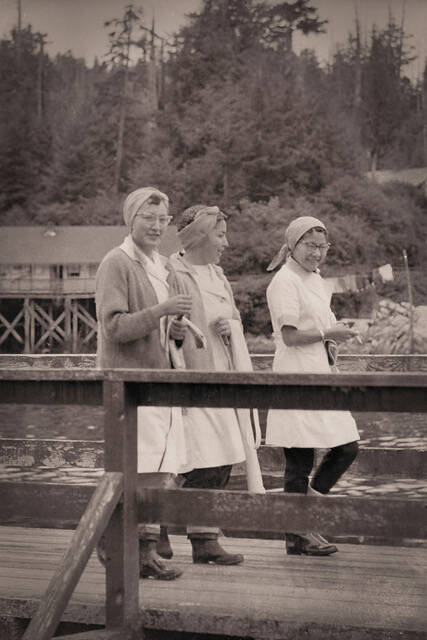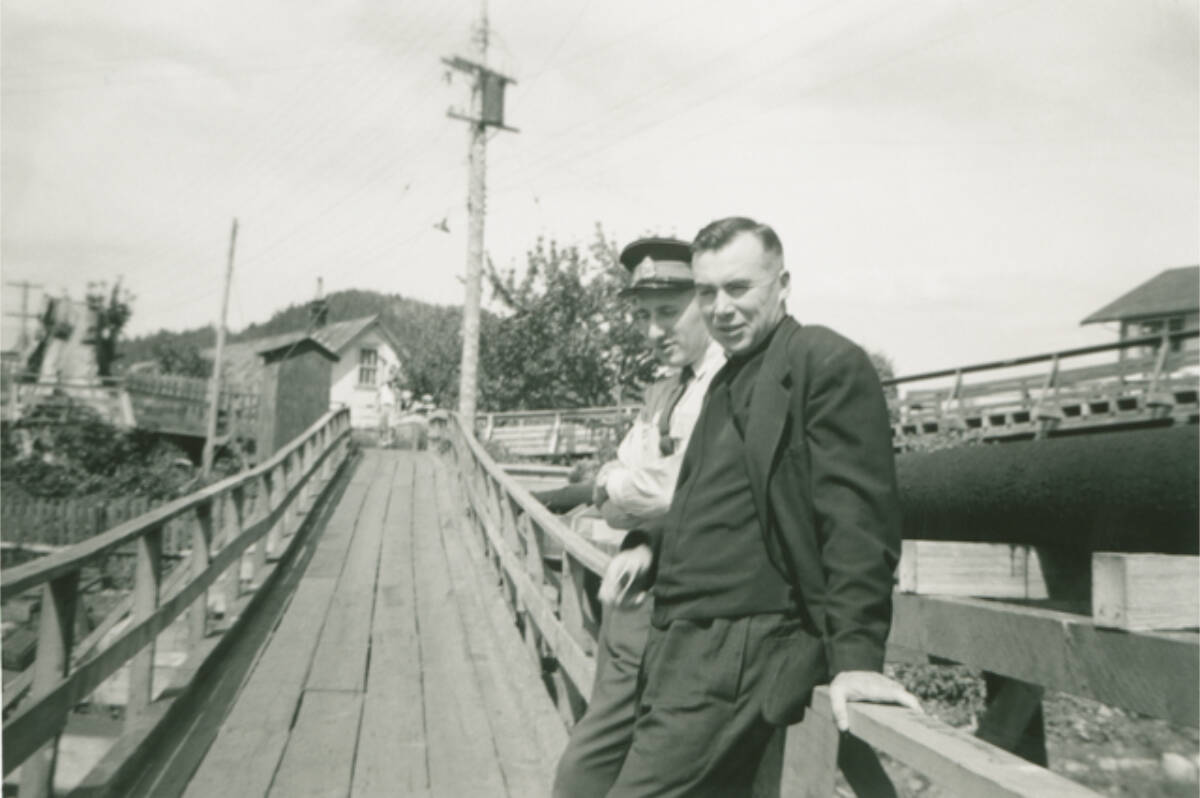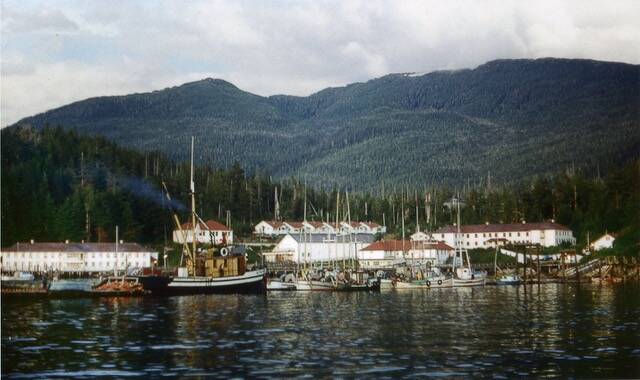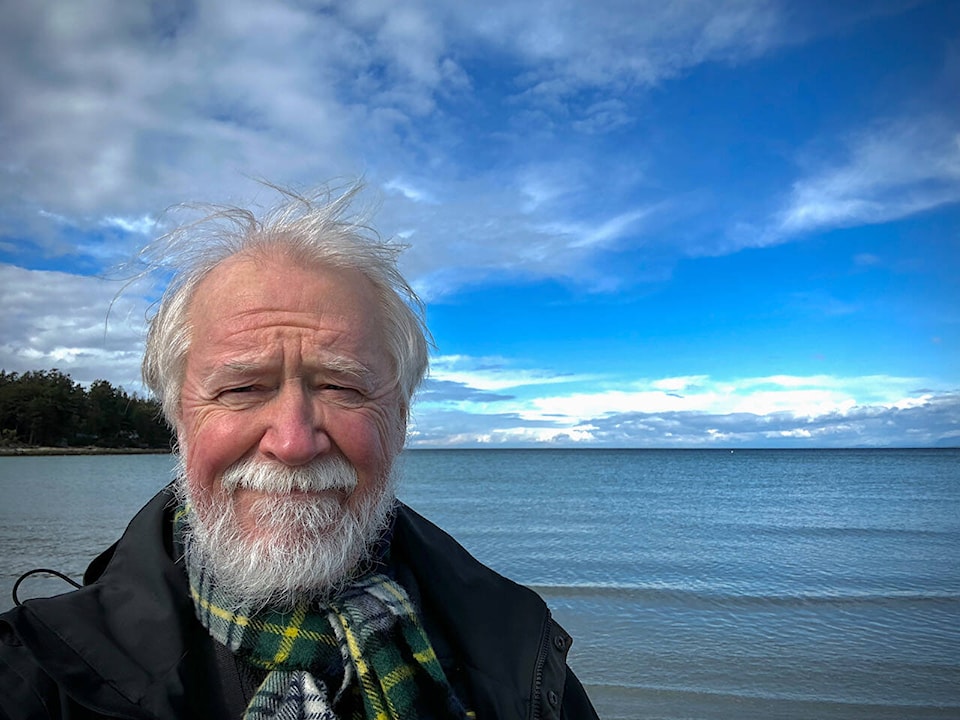Life at one of the oldest cannery villages on the Central Coast of B.C. is the subject of a new exhibit at The Art House Gallery in Bella Coola, opening May 3.
Namu - A Photographic Journey into the Past, features images taken by Svend-Erik Eriksen and his father Erik Hugo Eriksen during the 1950s and 1960s when the family lived there.
In 1952 Erik Hugo was hired to work at the cannery in Namu, located 110 km southwest of Bella Coola.
He then applied to work as the town’s electrician and when he got the job, arranged for his wife Valborg and four children in Denmark to join him.
Speaking from his home in Vancouver, Svend-Erik recalled his first impressions of Namu, having moved there when he was three-years-old.
It was nighttime when they arrived by Union Steamship so it was not until the next morning Svend-Erik saw “immense trees and the rugged wilderness of the coast.”
They were from a small fishing village in northern Jutland but it was quite flat and open, nothing like the Central Coast.
Two more children were born into the Eriksen family at Namu.
Valborg worked as the janitor for the two-room schoolhouse.
On the evening of March 23, 1960 the children were all helping her clean and polish the floors.
When they were done they returned home to discover Erik Hugo had died. He had suffered an aneurysm and was only 42 years of age.
Soon afterwards Valborg moved the family to White Rock.
“My dad had been to White Rock once and wrote a letter to my mom before we left Denmark saying how much he liked it. I think that’s why she chose it as the place to move us and purchased a home there,” Svend-Erik said.
In 1964, Svend-Erik returned to Namu to babysit for his mom’s best friend who worked in the cannery. During the summers of 1965 to 1970, he returned and worked in the cannery himself.
But, it would be almost four decades later that he visited Namu again in 2009.
He said his feelings were mixed by what he saw there on that return visit.
“There were caretakers looking after the place but so much was gone. It was quite sad and kind of fascinating,” he recalled.
His family had lived there during the era when British Columbia Packers Ltd. held ownership of the cannery, which they did until the 1980s when it was sold.
After the 2009 visit he compiled a written history of Namu and included some archival images as well as some of his family’s personal collection.
In his history, he outlined how the cannery was built in 1893 by Robert Draney, after he was given the land by John Clayton of the Bella Coola Cannery.
The cannery at Namu changed hands several times before being purchased by BC Packers in 1928.
Archaeological surveys in 1967 revealed the site was more than 10,000 years old.
“Situated by a salmon bearing river, with an estuary and beaches, the site would have been attractive to the early people of that time,” he wrote, adding when he was a kid, he was told that Namu was a Heiltsuk word meaning Place of Whirlwind.
To prepare for the exhibit, Svend-Erik has framed some large photographs and some smaller ones he’s mounted on hardboard to create context.
He admitted he probably has more photographs than he needs, but he will know better once he begins to hang the show in the gallery.
His aim is to give people a taste of what Namu looked like and what life there was like, featuring the cannery, the town, the bunkhouse and more.
After his mother was killed in 1968 by a drunk driver, he found some letters in her belongings his father had written to her in which he described the Central Coast.
“Dad loved it at Namu. He thought it was beautiful and he loved the wilderness.”
Svend-Erik attended the Vancouver School of Art, known now as Emily Carr, to study painting, photography and animation.
His first work was as a freelancer doing lots of work in animation around Vancouver.
Eventually he was hired by the National Film Board where he worked as an animator, director and producer, until he retired in 2007.
One of his last assignments took him to Bella Coola where he worked with Indigenous filmmaker Banchi Hanuse.
“It was a pilot project working with First Nations kids, 12 to 27 years old called ‘Our World.’ They all made films and had to make them in the first language.”
Excited about visiting Bella Coola, something he tries to do once a year to see his sister Ida Eriksen who moved there in 2013, he recalled the first time he drove to Bella Coola in 1996 and how it made him feel.
After arriving at Heckman Pass in the Coast Range and starting down the famous hill, he said the air became fragrant, the trees got taller and larger as he got closer to the Coast.
“Something about the air, the smell, the green lushness spoke to me in a visceral way. I could feel the hairs on the back of my neck rising. I realized I was coming home. Home to a world that had imprinted its character - an essence in my subconscious mind as a child growing up in that world,” he said. “Maybe that’s what creates a deep sense of home for people growing up in places.”
The photograph exhibit will be at The Art House Gallery until Wednesday, May 31.
READ MORE: Bella Coola artist evokes feelings of mystery and solitude with abstract west coast landscapes
READ MORE: Films from two Bella Coola directors part of Hot Docs Festival 2023 lineup in Toronto
monica.lamb-yorski@wltribune.com
Like us on Facebook and follow us on Twitter



